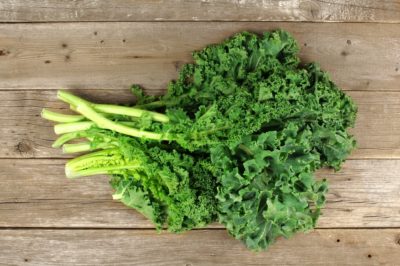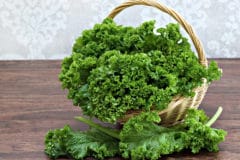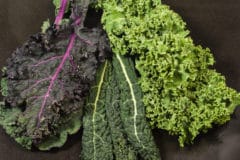When to Pick Kale Sprouts
Kale sprouts are ready to pick almost as soon as you see the first two little “leaves” appear. When planted, the seeds should have been spaced so tightly that you see a solid sheet of leaves covering your container. These first leaves, called the cotyledon, nourish the plant until the true leaves appear, but kale sprouts should be picked before the true leaves form.
When to Pick Baby Kale
Baby kale should be picked while the leaves are still smaller than your hand. The approximate number of days from planting to the date when you can begin picking baby kale for some of the popular varieties of kale are:
- Vates Blue Dwarf – 30 days
- Lacinato/Toscano – 30 days
- Winterbor – 28 days
When to Pick Mature Kale
Different species of kale reach maturity at different times, and kale sprouts and baby kale are harvested before reaching maturity. Your kale is mature when the leaves reach the size of your hand. The approximate number of days from planting to the day you can begin picking mature kale for some popular varieties of kale are:
- Dwarf Blue Curled – 55-60 days
- Dwarf Green Curled – 50-60 days
- Improved Dwarf Siberian – 50 days
- True Siberian – 70 days
- Red Ursa – 65-70 days
- Redbor – 55-65 days
- Lacinato – 60-80 days
- Winterbor – 52-60 days
- Toscano – 65 days
- Red Russian – 50-60 days
- Vates Blue Curled – 55-56 days
- Siberian – 60-70 days
- Winter Red – 50 days
- Ripbor – 65 days
Preserving Kale for Winter Use
Like spinach, kale can be frozen or canned, but it can also be dried and crumbled or powdered. Follow these directions to dry your kale:
- Wait until the sweet flavor of the kale has been enhanced by one or two weeks of morning frosts, then pick it. If this will be your last harvest for the season, cut the plant off of the stalk.
- Rinse and soak the leaves and briefly allow the leaves to dry in your colander.
- Remove the stems and veins and discard them or dry them separately because they require a longer drying period.
- Place the leaves on your cutting board, and, using a sharp knife, chop the leaves into fine strips.
- Stack the strips on top of each other, roll them up as you would roll a jelly roll, and chop them up into slivers no larger than 1/8″.
- You can dry small batches overnight in your oven using just the oven light, but a dehydrator is best for preserving large batches for the winter.
- You also dry kale in the oven by setting the temperature below 145°F (63°C) and turning the kale over hourly.
- In a dehydrator, dry the leaves or the stems and veins on medium until they are crisp, brittle, and crumbly. If any moisture remains, continue drying.
- Once they are dry, allow the leaves to cool to room temperature, and store them in glass jars. Make sure that the lids fit tightly. You can store your dried kale as slivers, crumble it, or even powder it.
Serving Kale
Kale is a versatile vegetable, whether you grow it as sprouts, baby kale, or mature kale. When considering how to use your kale, remember that the smaller the leaf, the milder the flavor. In general, you will probably want to use smaller leaves for salads and larger ones for soups and stews. Try some of these serving ideas.
Ideas for Serving Kale Sprouts
You can toss your kale sprouts into a salad, use them as a garnish, use them as a seasoning, lightly roast them, or sauté them and serve them as a side dish with your entree.
Ideas for Serving Baby Kale
You can use baby kale leaves whole or chopped. Use them in your recipes as a substitute for spinach or other greens, or chop them up to add a twist to your seasonings. You can also serve them fresh in a salad, or apply the seasoning of your choice and roast them until they become crispy to create kale chips for snacking.
Ideas for Serving Mature Kale
Baby kale has a milder, sweeter flavor than mature kale. Massaging mature leaves or those grown in summer’s heat can restore some of the sweet flavor. You can also remove the plant’s tougher stems and veins from the leaves or eat them, as you prefer.
While the flavor of mature kale leaves might be too strong for a salad, you can add them to soups, stews, and other dishes, especially as a substitute for spinach.












